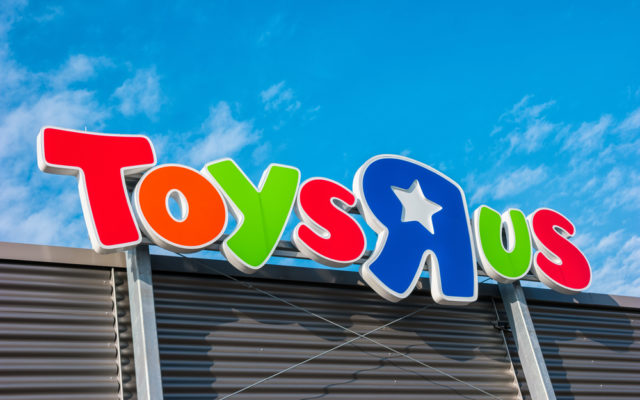It’s all across the media this week – Britain’s entire chain of Toys R Us stores is expected to close before the end of April after the retailer collapsed into administration last month.
Toys R Us joins a long list of high street retailers in the UK, like Claires and Maplin, that have run into difficulties this year. The Toys R Us US parent company filed for bankruptcy last September and its 800 stores across the United States are expected to close all their doors in the weeks ahead.
Since 2015, bankruptcies in the retail sector have accelerated faster than a Fisher-Price Power Wheels Dune Racer could race down the aisle of a Toys R Us store. It’s a growing trend among pre-digital economy firms – but not a very cool trend, as they get written into the history books.
Antiquated Business Models
eCommerce was pretty new in 2005. Amazon was a paltry $8.5billion non-profit-making firm that few CEOs took seriously. But as Amazon’s growth continued, Toys R Us had neither the mindset nor the money to fight both the traditional brick-and-mortar retailers, and build a credible online presence.
Just over a year ago Toys R Us brought in a new Chief Marketing Officer and the CEO announced; “I expect to see her immediate positive impact on our marketing programs and ability to connect with today’s consumers and drive traffic into our bricks and mortar stores and our web store.” Somehow brand isn’t always king, and I’m lost as to how ad agency BBDO expected a series of nostalgic TV ads containing vintage footage to shift the minds of children.
Despite what many believe, digital marketing is just the tip of the iceberg when it comes to the transformation of business. That alone is not enough to bring about legitimate digital business transformation.
New Kids’ on the Shop
My nine-year-old son decides what he wants by chatting in online games then learning more on YouTube. Not by walking into a brick and mortar store with his mum and dad.
While that might have inspired old folk like me as a kid, it’s the stuff that we’ll amuse our grandchildren with when we tell them stories of “how things used to be”. And how a firm once called Toys R Us was once the best thing since Space Invaders, the ZX81 and sliced bread.
The sad part is that, despite an ever-increasing number of casualty cases, too many old school CEOs still think business can be won and done that way. They keep looking at what worked well in the past, instead of how they might reinvent the future.
The digital economy presents an unprecedented opportunity – but it takes the right digital and entrepreneurial mindset among a CEO and their leadership teams to capitalise on it.
So the firm that had emerged in the 1970s as a category killer didn’t fit in with the digital economy and it transformed itself into a catastrophic failure. There’s more to the demise of Toys R Us than just an ignorance towards digital business transformation, but the noble notion that a brick and mortar business can compete against digital business will always lead to a predictable fate.
Old assumptions such as business model stability are becoming false – and yet leaders hang on to them because it’s what they read in bestselling business books that are 20 years old. Expectations around market share stability and customer loyalty no longer ring true as new competitors appeal to customers differently and cause rapid and significant shifts in buying behaviour.
Uninformed Decisions
The Toys R Us story isn’t so much a lesson about Amazon, or eCommerce disrupting the market. The lesson to be learned here is that uninformed decisions and antiquated thinking can take your firm to the grave. You might have a great vision and ideas about new ways to compete – but if you don’t have the money, mindset and transformation capabilities to invest in legitimate digitally enabled business transformation, the outcome is unlikely to be what you need.
To succeed today, leaders need the money, mindset and capabilities to invest in continuous transformation and change. If you lack that then the odds are high in your favour to joining Toys R Us, Radio Shack, Payless Shoes, Borders, Kodak, and hundreds of others that have already been led to an early grave.
The big old brick and mortar stores that Toys R Us invested in are a dying way of doing business. These antiquated business practices are increasingly unsuited to what consumers want and expect, and day by day, they’re becoming less productive, less efficient, less profitable and less relevant to the world we live in.
Who’s Next?
It doesn’t take a rocket scientist to take a quick look inside a company and get a sense of whether they’re deluding themselves with “digital sugar coating” or legitimately transforming their business using digital. Toys R Us sugar coated their company with initiatives called experiential elements, technology initiatives and digital ads. Sounds nice – but what did that really achieve?
The question isn’t so much about which other digital sugar coaters will follow in the wake of Toys R Us. It’s about whether they’s survive another one, three or five years.
The message to employees everywhere is to take stock of what your leadership is doing, and decide whether they’re lulling the organisation into a false sense of transformation security, or whether they’re truly creating a new and exciting future for you and the rest of the firm. Then act accordingly.
But don’t for one moment think that a staff-count of 64,000 and 1,600+ stores (Toys R Us) means that you’re set for a steady career with a well-known brand. Not in this day and age.
Article by channel:
Everything you need to know about Digital Transformation
The best articles, news and events direct to your inbox
Read more articles tagged: Business Model, Featured, Strategy









